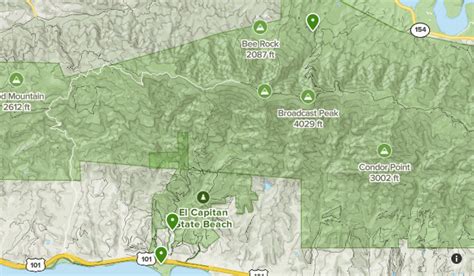El Capitan, a term that sparks intrigue and curiosity, particularly among those familiar with the grandeur of Yosemite National Park and the world of operating systems. To simplify the understanding of El Capitan, let’s delve into its dual identity, exploring both its natural wonder and its role in the tech world.
The Natural Wonder: El Capitan in Yosemite
El Capitan, translating to “The Captain” in Spanish, is a granite monolith located in Yosemite National Park, California. It stands at an impressive 3,000 feet (900 meters) above the valley floor, making it one of the most iconic and formidable rock formations in the world. This natural giant has been a challenge for rock climbers for decades, with its sheer face presenting a formidable obstacle that only the most skilled and brave climbers dare to attempt. The first ascent of El Capitan was made in 1958 by Warren Harding and his team, marking a significant milestone in the history of rock climbing.
El Capitan’s allure extends beyond its climbing challenges. It is a testament to the power of geological forces that have shaped our planet over millions of years. The rock’s composition and structure provide valuable insights into the Earth’s history, with its granite core telling a story of intense heat and pressure deep within the Earth’s crust. The formation’s visual appeal, with its majestic stature and the way it interacts with the surrounding landscape, especially during sunrise and sunset when it is bathed in a golden light, makes it a favorite subject for photographers and artists.
The Operating System: OS X El Capitan
Shifting from the natural world to the digital realm, OS X El Capitan is the 12th major release of OS X, Apple’s operating system for Macintosh computers. Announced on June 8, 2015, and released to the public on September 30, 2015, El Capitan was designed to refine the Mac experience, building upon the features and design introduced with OS X Yosemite. The name “El Capitan” was chosen to reflect the operating system’s focus on stability, performance, and security, much like the rock formation’s enduring presence in Yosemite.
Key features of OS X El Capitan included improved performance, a new Split View for dividing the screen between two apps, enhancements to the Spotlight search, and a revamped Notes app. Additionally, the operating system introduced a new Safari with pinned sites and improved tab management, as well as an enhanced Photos app. Under the hood, El Capitan brought improvements to security, including the adoption of System Integrity Protection (SIP) to protect system files and directories from modifications, even those made by the root user.
Connection Between the Two
While the natural wonder and the operating system may seem worlds apart, there is a symbolic connection between them. Both represent pinnacle achievements in their respective domains—a testament to human ingenuity and the awe-inspiring power of nature. Just as El Capitan, the rock formation, stands as a challenge and an inspiration to climbers and nature enthusiasts, OS X El Capitan was positioned as a marker of innovation and advancement in personal computing, pushing the boundaries of what users could expect from their Macs in terms of both performance and user experience.
Conclusion
In conclusion, El Capitan, whether referring to the granite giant in Yosemite or the operating system from Apple, is a name that embodies excellence and achievement. Both entities have left their mark, one on the landscape of nature and the other on the digital landscape, serving as reminders of the human spirit’s quest for challenge, innovation, and beauty.
For those looking to explore more about El Capitan, whether as a natural wonder or a piece of software history, there are numerous resources available, from guides for climbers and photographers to technical specifications and user manuals for OS X El Capitan. Each offers a unique perspective on what it means to reach new heights, whether that’s scaling the face of a rock or pushing the boundaries of what’s possible in the digital world.
FAQs
What are the key features of OS X El Capitan?
+OS X El Capitan introduced several key features, including improved performance, a new Split View, enhancements to the Spotlight search, a revamped Notes app, and a new Safari with pinned sites and improved tab management.
Who was the first person to climb El Capitan?
+The first ascent of El Capitan was made by Warren Harding and his team in 1958. They completed the climb over the course of 47 days, marking a significant achievement in the history of rock climbing.
What is the significance of the name “El Capitan” for both the rock formation and the operating system?
+The name “El Capitan” symbolizes strength, stability, and achievement. For the rock formation, it reflects its enduring presence in Yosemite. For the operating system, it signifies a commitment to performance, security, and innovation, mirroring the rock’s unyielding nature.


